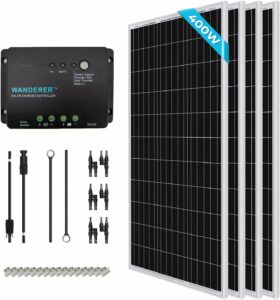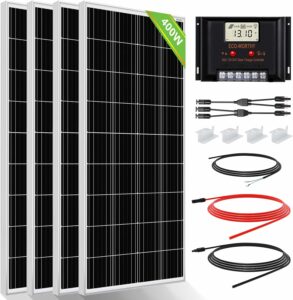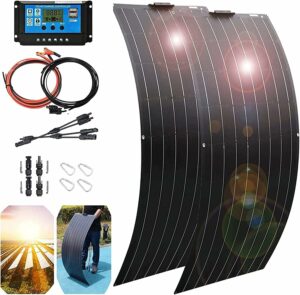Comparing Monocrystalline VS Polycrystalline Solar Panels: What You Need To Know
Introduction: Understanding Solar Panel Types
Solar power stands out as a beacon of sustainable innovation in the vast realm of renewable energy.
As individuals and businesses increasingly turn to solar panels to harness the sun’s abundant energy, it becomes crucial to comprehend the nuances of different solar panel types.
Among these, monocrystalline and polycrystalline solar panels take center stage, each with its own set of characteristics and advantages.
Defining Monocrystalline and Polycrystalline Solar Panels
Monocrystalline and polycrystalline solar panels are at the core of solar energy technology.
Monocrystalline panels are crafted from a single crystal structure, offering high efficiency and a sleek, uniform appearance.
On the other hand, polycrystalline panels are created from multiple crystals, making them more affordable while maintaining respectable performance levels.
Significance of Choosing the Right Type
Installing solar panels involves more than just a commitment to renewable energy—it requires a thoughtful choice between monocrystalline and polycrystalline technologies.
This decision hinges on energy efficiency, cost considerations, and aesthetic preferences.
Individuals can make informed decisions that align with their energy goals and budget constraints by delving into the specifics of these solar panel types.
Brief Overview of the Solar Energy Landscape
Before we delve into the specifics of monocrystalline and polycrystalline panels, it’s essential to appreciate the broader context of the solar energy landscape.
The global shift toward renewable energy sources, driven by environmental consciousness and a desire for energy independence, has propelled solar power to the forefront.
Solar panels have become integral to pursuing sustainable living, powering homes, businesses, and entire communities.
As we explore monocrystalline vs. polycrystalline solar panels, let’s unravel the intricacies of these technologies to empower individuals with the knowledge they need to make informed and environmentally conscious choices.
Provo Green Products embodies a beacon of trust in sustainable discoveries, offering choices that enhance your life and leave a positive mark on our planet.
Leveraging extensive expertise in manufacturing, construction, and various trades, we provide a solid foundation for sustainable living.
Our meticulous research process guarantees that our information about each product is precise and current, allowing you to make informed decisions.
Whether your interest lies in solar products, electric bikes, or other eco-friendly alternatives, our commitment to credibility ensures you have access to dependable insights, guiding your journey toward a more sustainable lifestyle.
Provo Green Products is your go-to destination for finding the right green products for your lifestyle.
Disclosure: As an Amazon Associate, we may earn from qualifying purchases. This does not affect the product pricing whatsoever.
Monocrystalline Solar Panels: Unraveling Efficiency and Performance
Characteristics of Monocrystalline Panels
Monocrystalline solar panels are distinguished by their singular crystal structure, resulting from the manufacturing process of growing a single crystal seed.
This meticulous production method imparts unique qualities to monocrystalline panels, setting them apart in the solar energy landscape.
Monocrystalline silicon crystals’ inherent purity and uniformity improve the panels’ efficiency.
These panels boast a higher energy conversion rate compared to their polycrystalline counterparts.
The uniform structure enables electrons to move more freely, translating sunlight into electricity with remarkable precision.
Efficiency Ratings and Energy Conversion
One of the key metrics when evaluating monocrystalline solar panels is their efficiency rating.
Typically, these panels have higher efficiency percentages, often exceeding 20%.
This means they can convert more sunlight into electricity within the same surface area as other solar panels.
The high efficiency of monocrystalline panels makes them attractive for installations where space is limited or maximizing power output is crucial.
This efficiency advantage is particularly beneficial in residential settings, where rooftops may have constrained space and every inch counts in harnessing solar energy effectively.
Advantages and Drawbacks of Monocrystalline Technology
While monocrystalline solar panels excel in efficiency, weighing the advantages and drawbacks is essential.
On the positive side, their high efficiency improves performance in low-light conditions, making them suitable for areas with less predictable sunlight.
However, the manufacturing process of monocrystalline panels is energy-intensive, potentially impacting their overall carbon footprint.
Additionally, these panels tend to be pricier than alternatives, which may influence the cost considerations for individuals or businesses looking to invest in solar energy.
In unraveling the efficiency and performance of monocrystalline solar panels, it becomes evident that their unique qualities position them as a premium choice in the solar market.
As we explore further, we’ll delve into the intricacies of their counterparts, the polycrystalline solar panels, to provide a comprehensive understanding for those navigating the solar energy landscape.
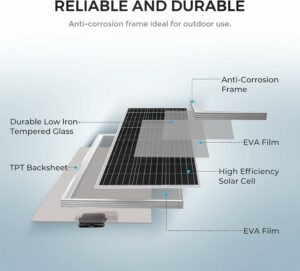
Polycrystalline Solar Panels: Exploring Affordability and Practicality
Features of Polycrystalline Panels
In contrast to their monocrystalline counterparts, polycrystalline solar panels are crafted from multiple silicon crystals, forming a less uniform structure.
This manufacturing process brings forth distinct features that define the characteristics of polycrystalline panels.
The production method allows for a more straightforward and cost-effective manufacturing process, contributing to the affordability of polycrystalline solar panels.
The crystals are melted together, creating a mosaic-like appearance on the panel’s surface.
While this may result in slightly lower efficiency than monocrystalline panels, the affordability and practical considerations make polycrystalline panels an appealing choice for various solar energy applications.
Cost Comparison with Monocrystalline Panels
One of the primary advantages of polycrystalline solar panels is their cost-effectiveness.
The manufacturing process is less resource-intensive, leading to lower production costs.
As a result, polycrystalline panels are typically more budget-friendly, making them an attractive option for individuals or businesses with financial constraints.
While the efficiency of polycrystalline panels may be slightly lower than that of monocrystalline panels, their cost-effectiveness often outweighs this factor.
This makes polycrystalline panels a practical choice for those seeking a balance between performance and affordability in their solar energy investments.
Practical Considerations for Choosing Polycrystalline Technology
Beyond cost considerations, polycrystalline solar panels offer practical benefits that make them suitable for specific applications.
Their manufacturing process results in a less uniform appearance, which can be visually distinct and preferred by some individuals seeking a unique aesthetic for their solar installations.
Additionally, the lower efficiency of polycrystalline panels may be less critical in scenarios where ample space is available for installation.
In large-scale projects or areas with expansive sunlight exposure, the affordability of polycrystalline panels can make them a sensible and economically viable choice.
As we explore the affordability and practicality of polycrystalline solar panels, it becomes evident that they present a compelling alternative for those looking to harness solar energy without compromising their budget or overall system performance.
In the following sections, we’ll delve deeper into durability and longevity, providing a comprehensive guide for individuals navigating the diverse landscape of solar panel options.
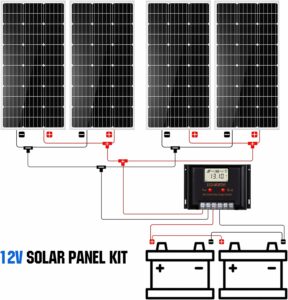
Durability and Longevity: A Comparative Analysis
Examination of Durability in Monocrystalline Panels
Durability is crucial when considering solar panels, as they are exposed to the elements throughout their operational life.
Monocrystalline solar panels are known for their robust construction and longevity.
The single-crystal structure not only enhances efficiency but also contributes to the overall durability of these panels.
The monocrystalline silicon used in these panels is typically high purity, reducing the susceptibility to wear and tear over time.
Moreover, the manufacturing process often involves encapsulating the solar cells in tempered glass, providing additional protection against environmental factors such as hail, snow, and UV radiation.
Lifespan Expectancy and Maintenance
Monocrystalline solar panels are renowned for their extended lifespan, often exceeding 25 years with proper maintenance.
Routine care, such as cleaning to remove dust and debris, ensures optimal performance over the years.
The durability of monocrystalline panels, coupled with their longevity, positions them as a reliable and sustainable investment for those seeking a long-term solution for their energy needs.
Similar Analysis for Polycrystalline Panels
Turning our attention to polycrystalline solar panels, a comparative durability analysis reveals some nuanced differences.
While polycrystalline panels may have a slightly lower efficiency than monocrystalline panels, their construction still prioritizes durability.
Polycrystalline panels commonly feature a rugged aluminum frame and a layer of tempered glass, protecting against adverse weather conditions.
The multiple crystal structure, while contributing to cost-effectiveness, doesn’t compromise the overall robustness of the panels.
Balancing Durability and Cost
Choosing between monocrystalline and polycrystalline panels involves balancing durability and cost considerations.
Monocrystalline panels often come with a higher upfront cost, but their extended lifespan and minimal maintenance requirements make them a cost-effective choice over the long run.
On the other hand, polycrystalline panels offer a more budget-friendly option without compromising significantly on durability.
For projects where immediate budget constraints are a concern, polycrystalline panels can still provide a reliable and durable solution, albeit with a slightly shorter lifespan than their monocrystalline counterparts.
Understanding the durability and longevity of monocrystalline and polycrystalline solar panels becomes pivotal in navigating the decision-making process.
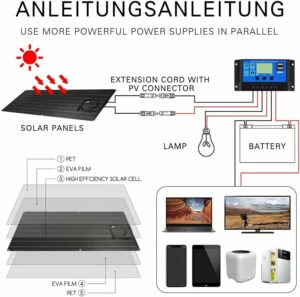
Environmental Impact: Eco-Friendly Aspects of Solar Panel Choices
Environmental Considerations in Manufacturing Processes
The production of monocrystalline and polycrystalline solar panels involves various materials and manufacturing processes that warrant scrutiny from an environmental standpoint.
Monocrystalline panels, known for their high-purity silicon, generally require more energy-intensive manufacturing.
The extraction and refinement of the single crystal structure contribute to a higher initial environmental footprint.
On the other hand, polycrystalline panels, with their less uniform structure, often involve a more straightforward and less energy-intensive manufacturing process.
Using multiple crystals allows for a more straightforward production method, making manufacturing polycrystalline panels more environmentally friendly.
Disposal and Recycling of Monocrystalline vs. Polycrystalline Panels
Responsible disposal and recycling practices become paramount as solar panels end their operational life.
Despite their energy-intensive manufacturing, monocrystalline panels tend to be more easily recyclable due to the high purity of the silicon used.
The purity of the material facilitates the extraction of valuable components, promoting a closed-loop approach to materials.
Polycrystalline panels, while still recyclable, may pose some challenges in the recycling process due to the presence of multiple crystals.
However, advancements in recycling technologies continue to address these challenges, making strides toward a more sustainable end-of-life solution for all types of solar panels.
Making an Informed Decision for a Greener Future
When considering the environmental impact of solar panel choices, weighing the manufacturing footprint against the long-term benefits of clean energy production is essential.
Despite their higher initial environmental impact, monocrystalline panels offer higher efficiency and longer lifespan, potentially offsetting their manufacturing footprint throughout their operational life.
With their more straightforward manufacturing process and lower upfront cost, polycrystalline panels provide a greener alternative for those prioritizing immediate environmental considerations and budget constraints.

Conclusion
Ultimately, making an informed decision for a greener future involves a holistic assessment of the entire life cycle of solar panels.
The ongoing advancements in solar technology and recycling practices underscore the industry’s commitment to minimizing its environmental impact.
As we conclude our exploration of monocrystalline vs. polycrystalline solar panels, individuals can now approach their solar energy decisions with a comprehensive understanding of the environmental aspects that shape these choices.
Stay in Touch!
I’am a dedicated entrepreneur with many years of experience and an integrity-driven individual who is highly motivated to succeed. Leveraging extensive expertise in manufacturing, construction, and various trades, we can provide a solid foundation for sustainable living. Our meticulous research process guarantees that our information about each product is precise and current, allowing you to make informed decisions. A deep understanding of business operations empowers me to consistently implement improvements that result in ongoing success. Visit site.

